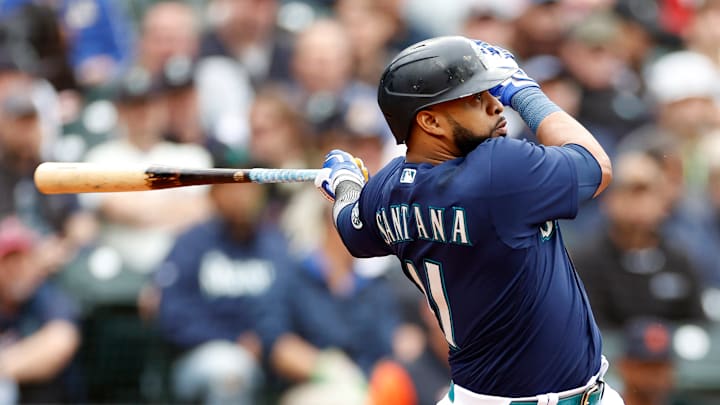MLB will implement new rules involving player positioning and shifting, but what Pirate players will benefit the most from the rules?
New shift rules will be implemented in the 2023 season. This means that the fielding team must have two players on each side of second base, as well, as both infielders must be on the infield dirt. Although this does not mean that the outfielders can’t shift, nor does that mean that the second baseman can’t play closer to first base and the shortstop can’t play close to the second base bag, it will likely lead to more hits overall.
The Pittsburgh Pirates have plenty of players who will greatly benefit from this new rule change, starting with one of their additions in Carlos Santana. Santana was the most shifted on left-handed batter last year at 98.1%. When he faced a left-handed pitcher, he wasn’t shifted on nearly as much, but fielders still re-positioned themselves 72.5% of the time when he came to the plate against lefties.
Despite being 36 years old, Santana still has plenty of power. He was in the top 81st percentile of exit velocity, the top 76th percentile of hard-hit rate, and the top 60th percentile of barrel rate. Santana had just a .308 wOBA but .352 xwOBA, which is based on launch angle and exit velocity. Plenty of more hard-hit balls should find their way to the outfield for Santana with the new rules.
Another addition they made this off-season was Ji-Man Choi, who also should greatly benefit from the new rules. Choi was shifted on 83.9% of the time when he stepped to the plate. When opponents realigned against Choi, he managed just a .308 wOBA. However, in the 67 times he came to the plate without a shift on, Choi had a wOBA of .415. For reference, Paul Goldschmidt had a .418 wOBA last season.
Like Santana, Choi has also displayed extreme raw power. He was in the 92nd percentile of exit velocity and 88th percentile of hard-hit rate. His barrel rate of 11.9% was in the top 84th percentile. Choi managed a .334 xwOBA last season. Given how much more productive Choi was without the shift, you could see him reach the .340 plateau in weighted on-base average.
Andrew McCutchen’s homecoming should also see him be more productive with the new rules. The former MVP wasn’t shifted on nearly as much as Santana or Choi, only seeing the shift in about half of his plate appearances (49%, to be exact). However, when he was shifted on, Cutch had just a .274 wOBA compared to .345 when the shift wasn’t on. That’s the difference between Adam Frazier and Rhys Hoskins last year.
Cutch isn’t nearly as powerful as both Santana and Choi, but he still has his fair share of hard-hit baseballs. He was in the 51st and 50th percentiles of exit velocity and hard-hit rate, respectively, and 57th percentile of barrel rate. All of Baseball Savant’s expected statistics had him as an above-average batter. One x-factor with McCutchen to consider is that he is still extremely fast. He was in the 90th percentile of sprint speed last year.
Surprisingly, Bryan Reynolds could also greatly benefit from the new rules, specifically when he faces a right-handed pitcher. He was shifted on 74.9% of the time, and while he had a .345 wOBA with the shift on, he was much better without it. Reynolds, without the shift, saw him have a .373 wOBA. Reynolds also had an above-average exit velo (top 73rd percentile) and hard-hit rate (top 66th percentile), so he should find the infield hole more often next year with the new rules.
Although the splits don’t show it, Oneil Cruz might also benefit from the new rules. He was shifted on 53.3% of the time, and while his shift/non-shift wOBA comes out to .321/.320, respectively, you have to imagine how many more baseballs will make it to the outfield against a guy who had an exit velocity of 91.9 MPH. Same thing with Jack Suwinski. Suwinski had a .313 shift wOBA/.306 non-shift wOBA, but he was also in the 86th percentile of barrel rate. If he keeps that up, he should see more baseballs hit the ground and become hits.
Just how much the new rules will affect players will be interesting, but there’s no doubt that it will lead to more hits. Teams wouldn’t have used such shifts if it didn’t significantly cut down offense. While the transition won’t be one-to-one (meaning I doubt that Ji-Man Choi will start hitting like Goldschmidt next season), it should help these players the most.
